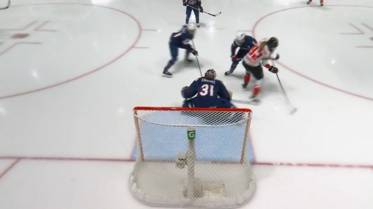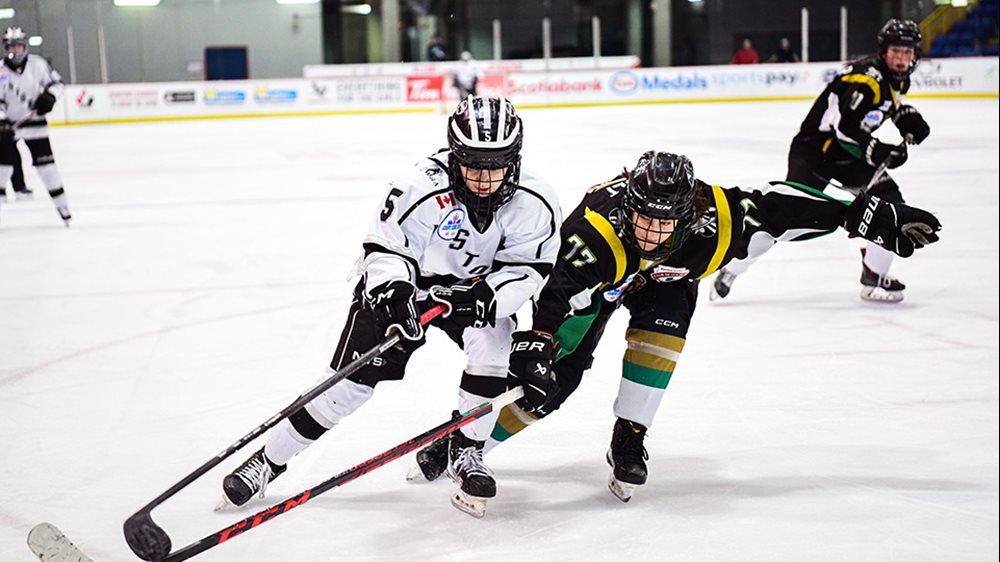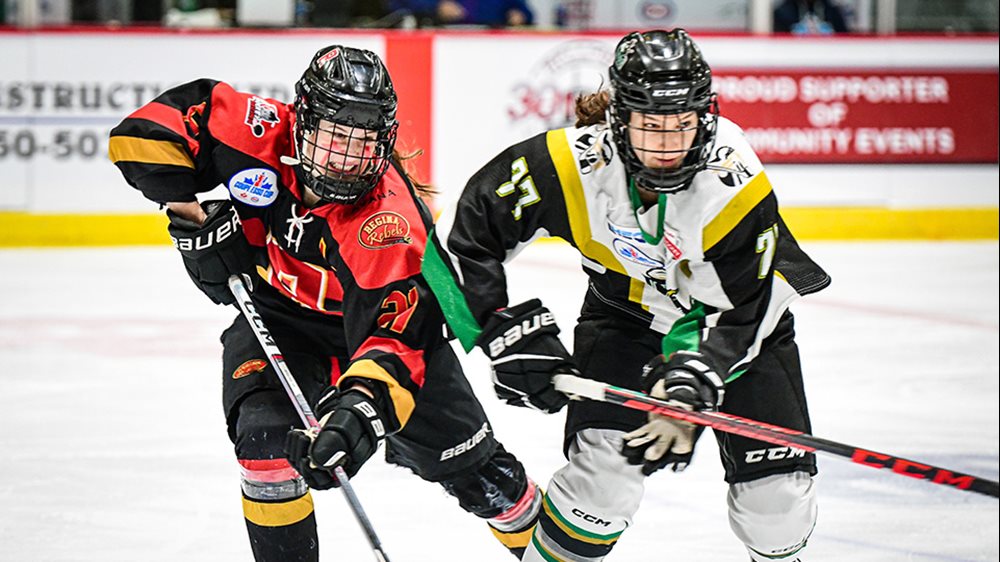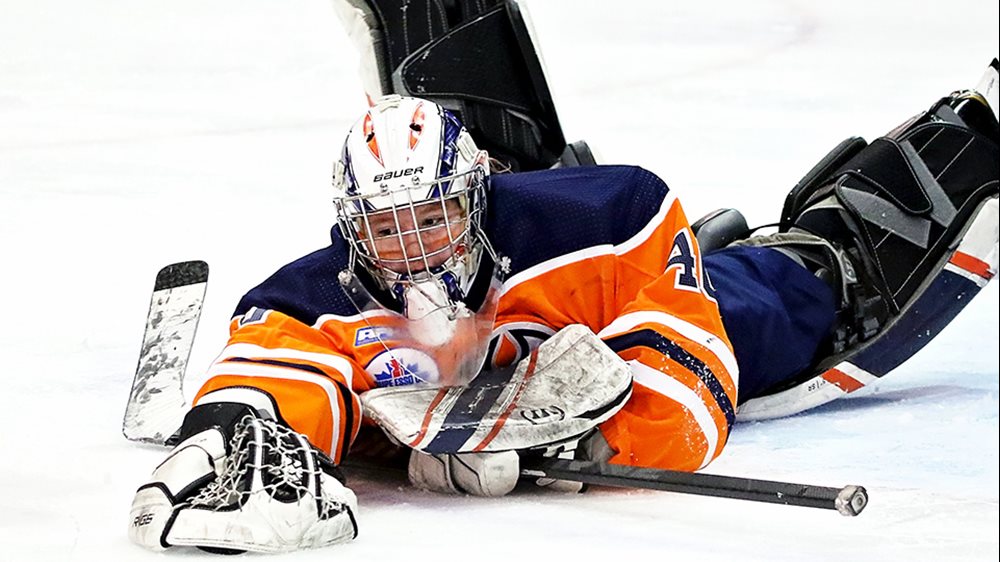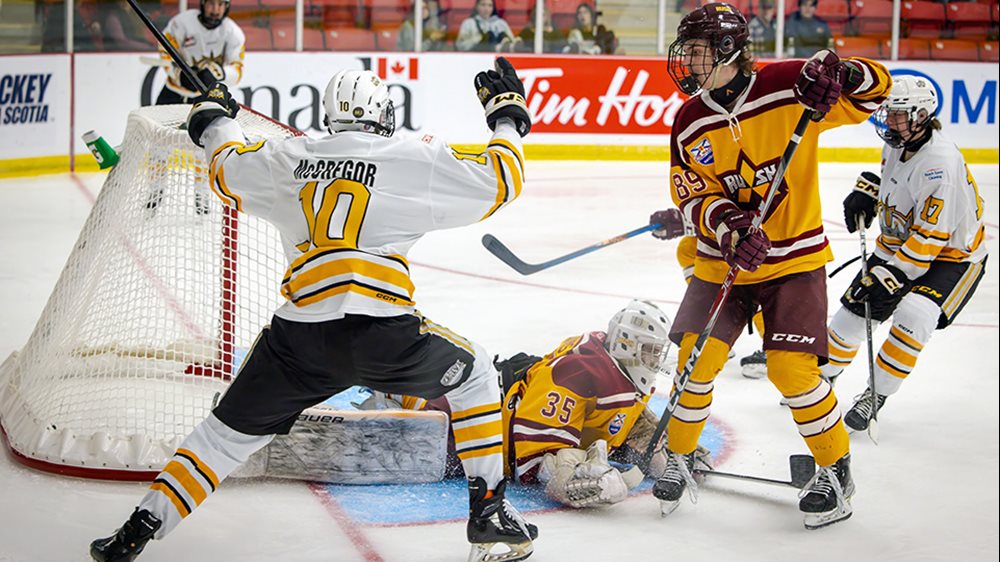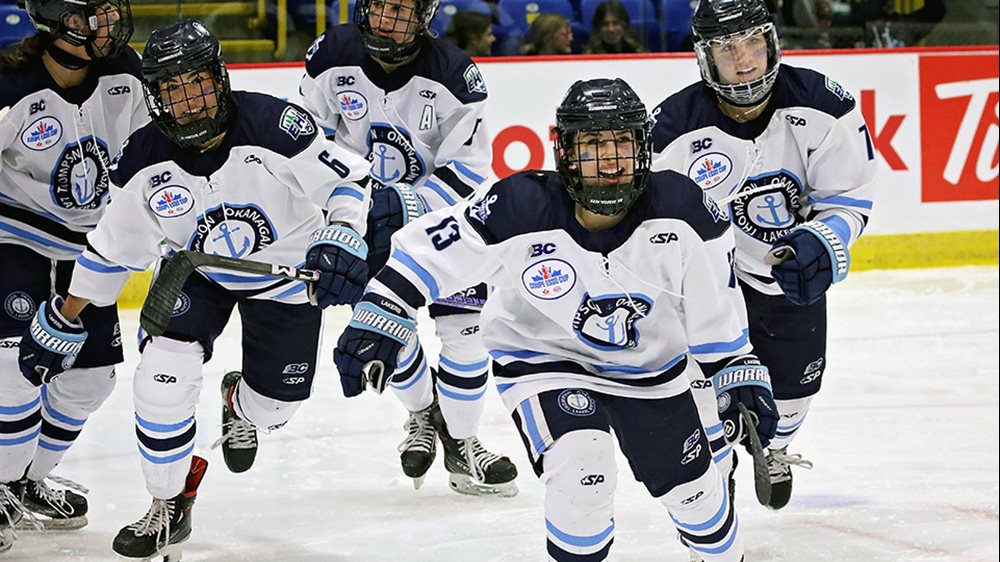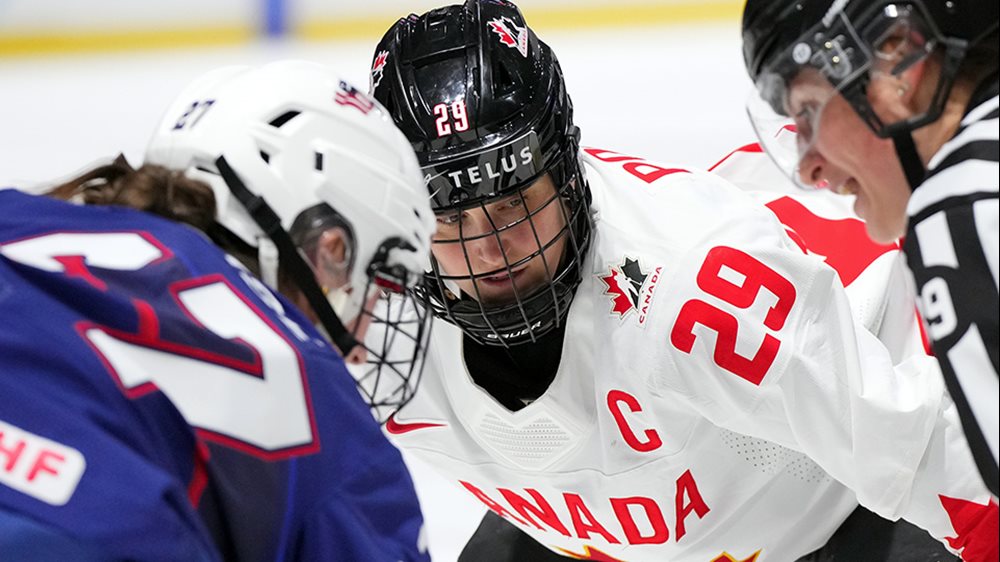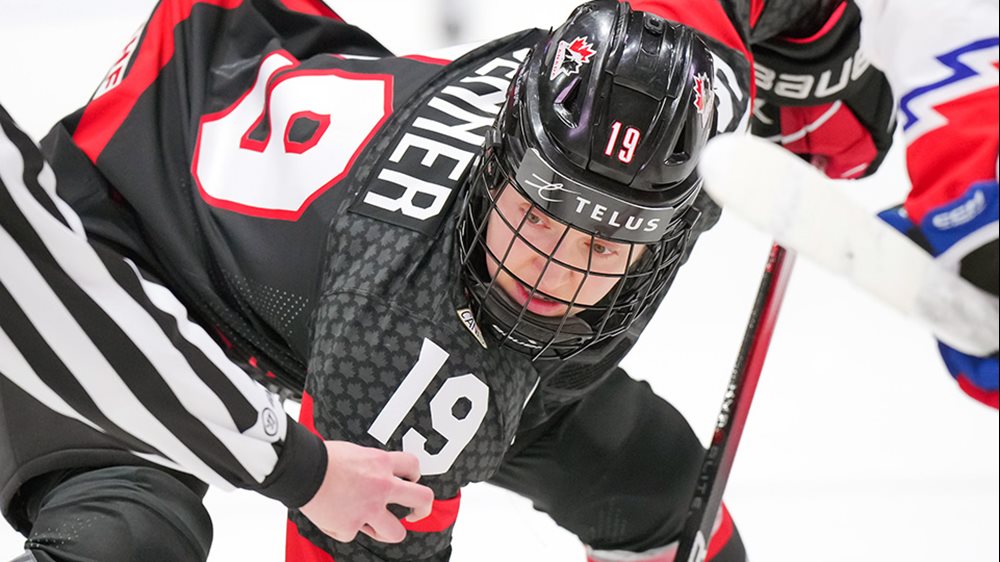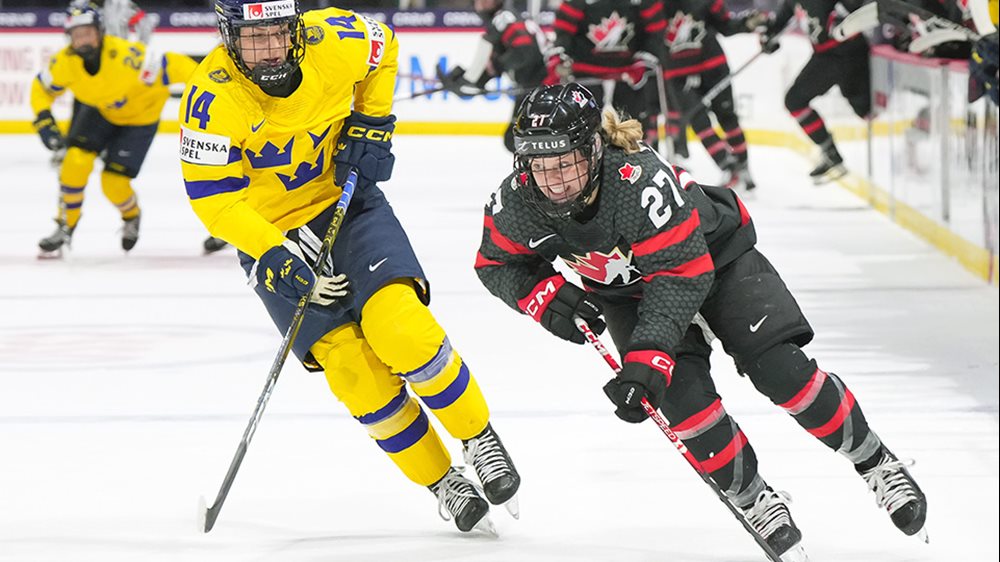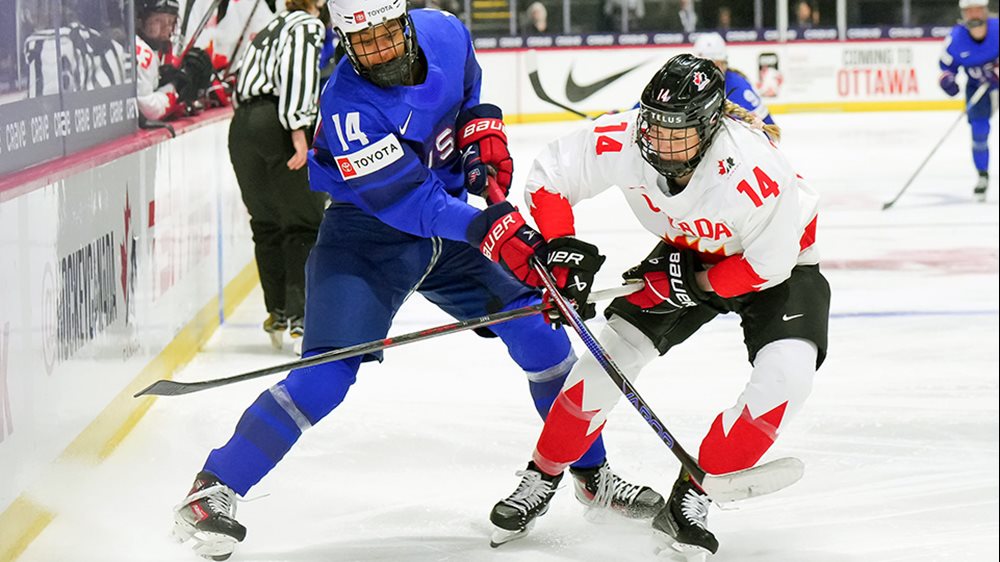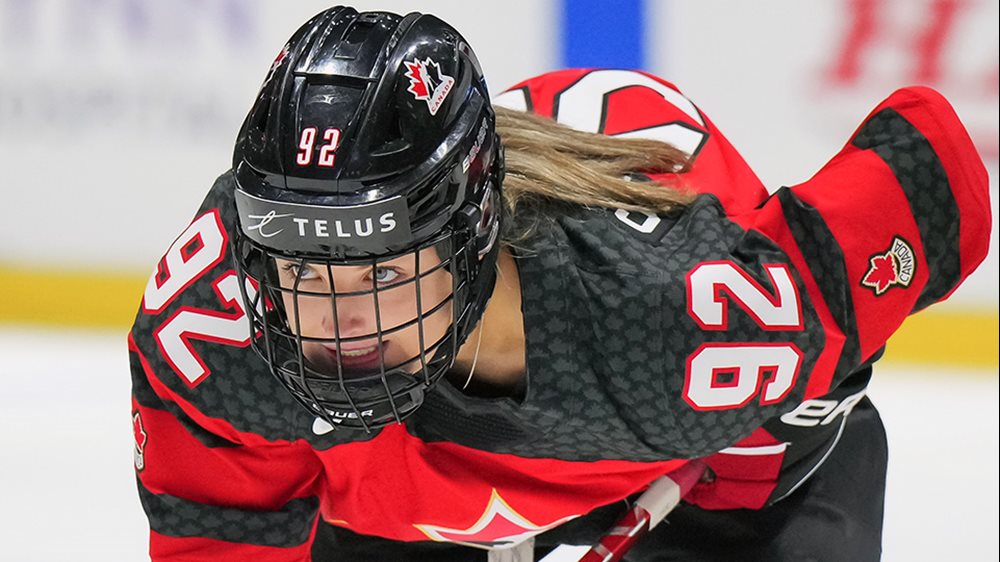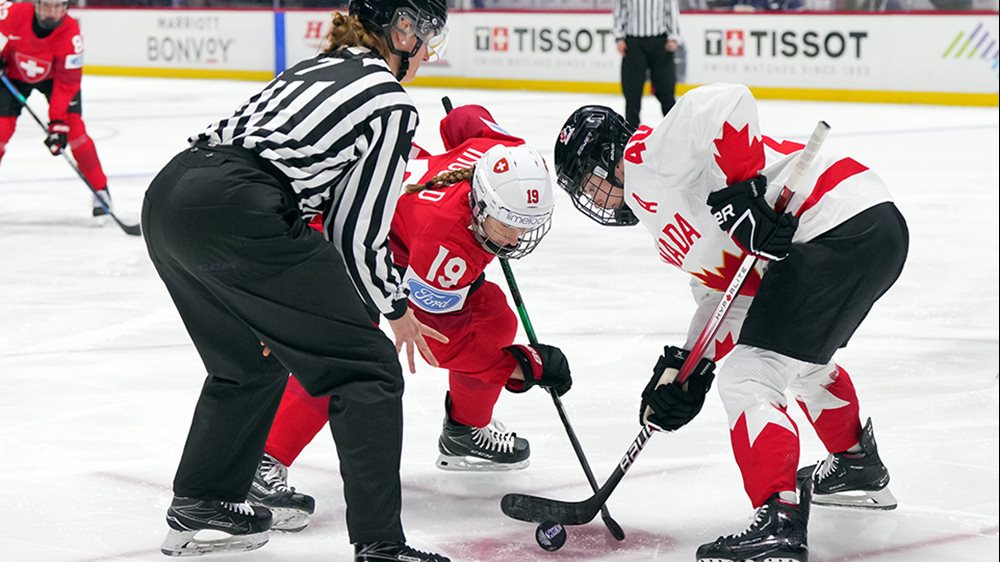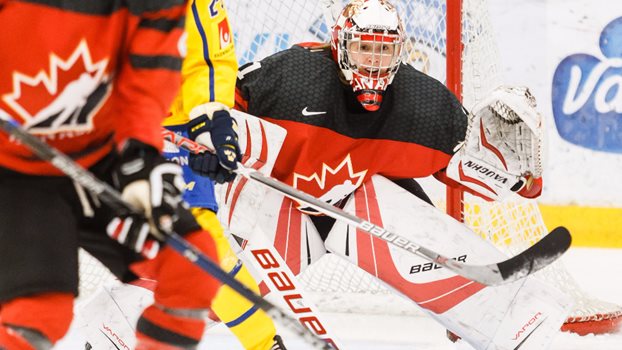
Bringing out her best
Through the ups and the downs, through championships and last-place finishes, Geneviève Lacasse has never stopped wanting to be better
When it comes to the basics, it feels like 2013 all over again for Geneviève Lacasse.
She parks in the same lot behind the Markin MacPhail Centre and makes the same walk – down the length of Joan Snyder Arena, a right into the bowels of WinSport Arena, past the glass doors to the Hall of Champions emblazoned with the Hockey Canada logo and left into the Team Canada dressing room.
Even the schedule looks the same – five months of games against Alberta Midget Hockey League competition, with a six-game series against the United States and the 4 Nations Cup mixed in.
But that’s where the similarities end. It may be the same old centralization, but it’s a brand-new goaltender.
Four years ago, Lacasse came to Calgary as the reigning CWHL Goaltender of the Year, but with just three games of international experience, slotted behind Olympic gold medallists Shannon Szabados and Charline Labonté on the depth chart.
She ended up dressing just once in Sochi, never saw the ice in game action and watched nervously from the stands as Canada completed a late comeback to beat the United States in overtime to win gold.
“Getting to be at the Olympics, getting to know the feeling of winning [was great, but] being in the stands was tough … having no control and trying to do everything I could in the dressing room between periods,” Lacasse says. “I definitely don’t want to be in that role [again].”
So when the Montreal-born, Kingston-raised puck-stopper arrived in the Stampede City in August to begin another Olympic go-round, she brought with her a new level of confidence, one built through ups and downs both with Canada’s National Women’s Team and in the CWHL.
After the Sochi Games, Lacasse took over the No. 1 role with the national team – she backstopped Canada to gold at the 2014 4 Nations Cup in Kamloops, B.C., and tended goal in her first IIHF Women’s World Championship the following spring.
At the club level she added a second Clarkson Cup to her collection in 2015, helping the Boston Blades to another CWHL championship while posting a league-leading 1.68 goals-against average.
But the bubble quickly burst. The creation of the National Women’s Hockey League in the summer of 2015 led to a mass exodus by the Blades’ American stars, leaving Lacasse and fellow Olympic gold medallist Tara Watchorn to lead a young and inexperienced team.
Boston plummeted to the bottom of the CWHL standings in 2015-16, winning just once in 24 games, and Lacasse never got the call to wear the red and white of Team Canada.
Where most would find frustration, Lacasse found motivation. She was the backbone of the Blades, playing all but one game and setting a league record with 1,023 saves – an average of 44.5 stops per game. She counts the season as one of the most important in helping her become the netminder she is today.
“Being a goaltender, a lot of it is seeing patterns and seeing how plays develop in your zone,” she says. “I definitely got a lot of zone time, so I got to see a lot of patterns, a lot of shots and rebounds. I probably saw three seasons worth [of shots] that I would have seen on another team.
“I also got to take on a bit of a leadership role on that team; the girls really looked up to Watchorn and I, and it was cool in that sense, getting the girls going. It was easily one of the top three ‘team’ teams I’ve played on, and we won one game. I wouldn’t trade that year for anything.”
From worst to first, Lacasse was on the move that summer. She was traded to the Calgary Inferno, the defending Clarkson Cup champions, in a deal that reunited her with her Team Canada cohorts; during the 2016-17 season, the Inferno roster included eight players who joined the goaltender in centralization, and she helped Calgary get back to the league final last spring.
The trade, and the fresh start, meant Lacasse was up against the best every single day, and provided no shortage of opportunities to compete.
“You see everyone’s work ethic, day in and day out,” she says. “Putting it all out there on the ice and in the gym; we’re super competitive in everything we do. We played a lot of spike ball last year, and there is a lot of competition.”
That competition has spilled over into the road to PyeongChang as Lacasse, Szabados and Ann-Renée Desbiens try to balance support for one another with wanting to be the one that gets the top job in February.
“I’ve known Shannon for a longer time,” she says. “We push each other, but we also have a lot of fun, and same with Desbiens; she comes in and she’s super chill, and we all just feed off each other. We bond together; it’s competitive, but at the same time we’re all relaxed.
“At the end of the day, [we are all willing to do] whatever is going to help the team out. I know all three of us want to be in the net for that gold medal game, and that’s the goal for all of us.”
For more information: |
- <
- >

